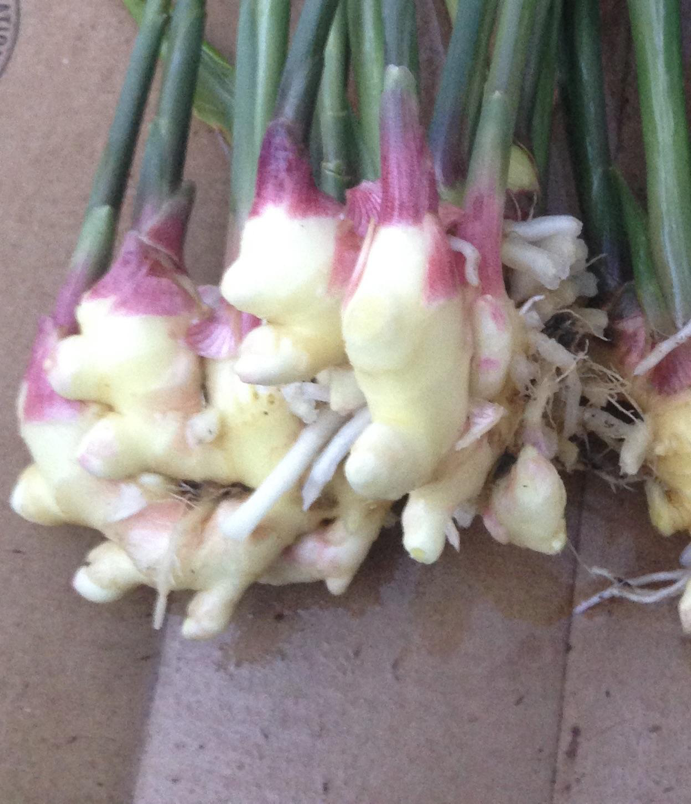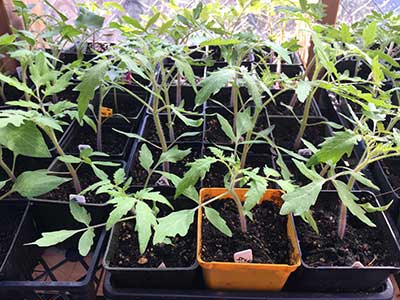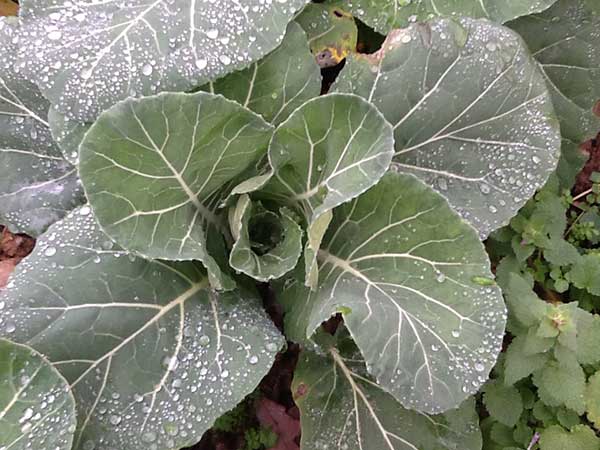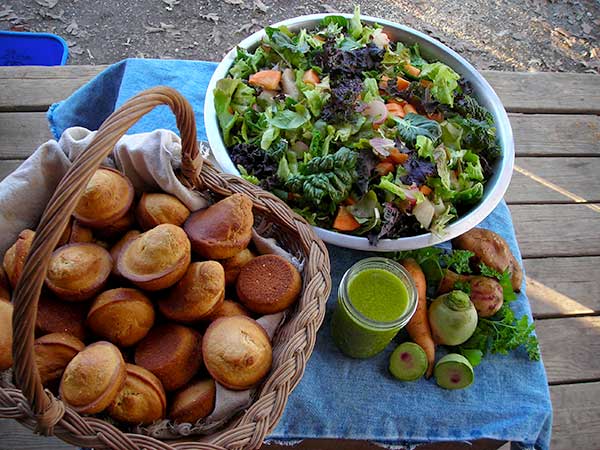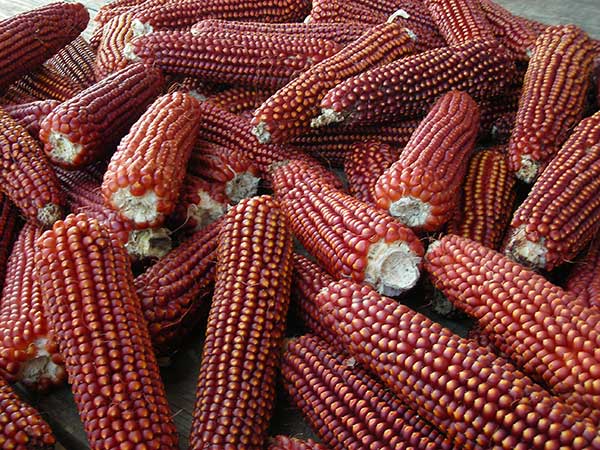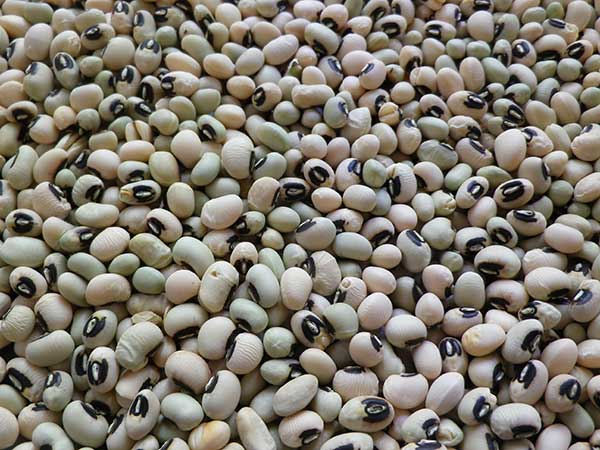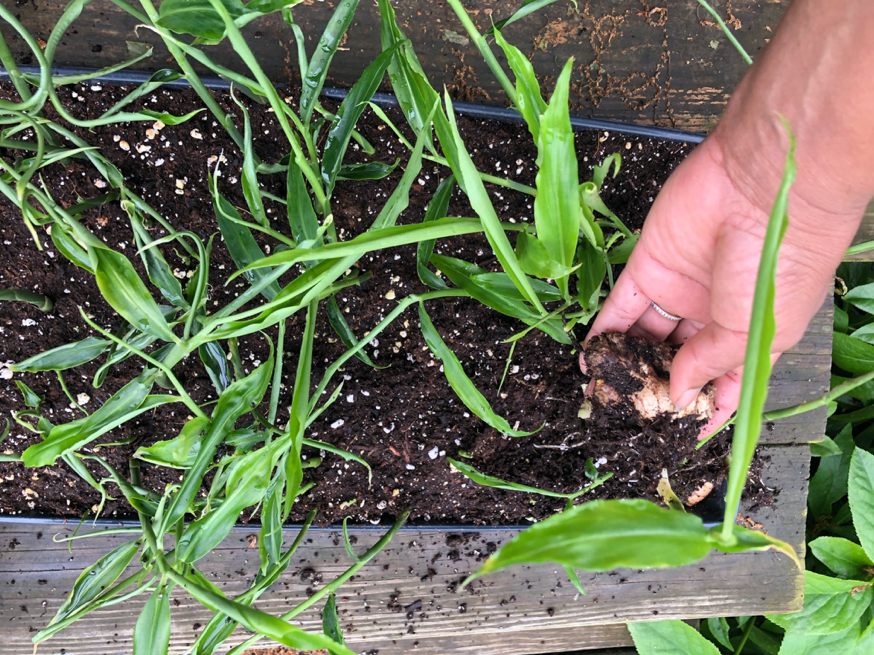
You can pre-order spring-shipped Turmeric plants and rhizomes and Ginger plants from Southern Exposure Seed Exchange.
By Ann Codrington of Nisani Farm.
Nisani Farm is owned and operated by women of color across three generations. Our Belizean roots flavor the feel of the farm in such a way that you find yourself in the tropics without having to leave Southside Virginia. In this forested 50-acre farmstead there is everything from turmeric and ginger to papayas and moringa trees, from medicinal herbs and mushrooms to cut flowers and purple vegetables, from rain garden plants and orchards to bitter melons and leafy greens, and all grown with Certified Naturally Grown practices.
While we grow and make a number of things – many continuously changing through experience and experimentation – what remains consistent is a focus on growing ginger and turmeric. Here is a peek into how we grow our turmeric!
Starting Turmeric and Ginger From Rhizomes
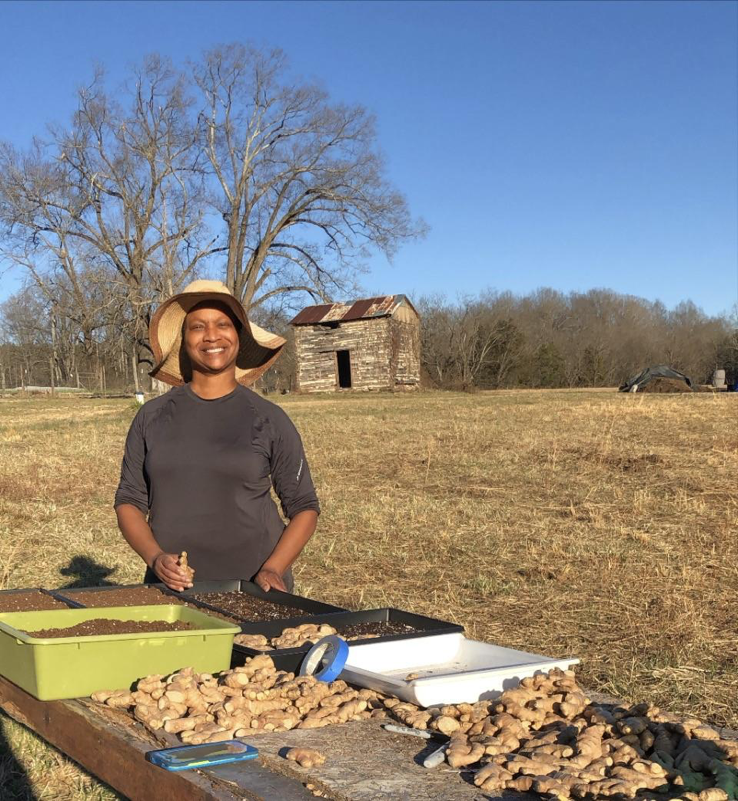
By far the hardest part of growing turmeric and ginger is getting rhizomes to sprout early enough in the season for them to put on good growth before late Summer. It takes good planning, or pre-sprouted plants to get a good crop in the Fall.
Planning for the growing season actually begins on November 1st of the previous year, when we place our order for new organic seed stock from Hawaii. Although the rhizomes won’t arrive until February, they must be secured in the fall to ensure the best selection.
In February, while temperatures are still cold in Southside Virginia, the organically grown rhizomes (also called “seed”) arrive and are prepared for planting. We sort and prepare rhizomes in a way that is likely to prevent disease and ensure survival. Then we place the flats onto temperature-controlled heat mats in our propagation room where they will stay until they sprout.
It can take anywhere from four to six weeks of keeping the rhizomes warm and moist before we begin to see sprouts. Once most of the rhizomes in a flat begin to sprout, we move the sprouts to a warm area in our high tunnels to continue to grow.
By April, all of the rhizomes will have sprouted. Once the seedlings are a few inches tall, we prepare them for shipping to SESE customers. We also give lectures to explain how to grow and use turmeric and ginger, and by May we are ready to plant our crop in Southside Virginia.
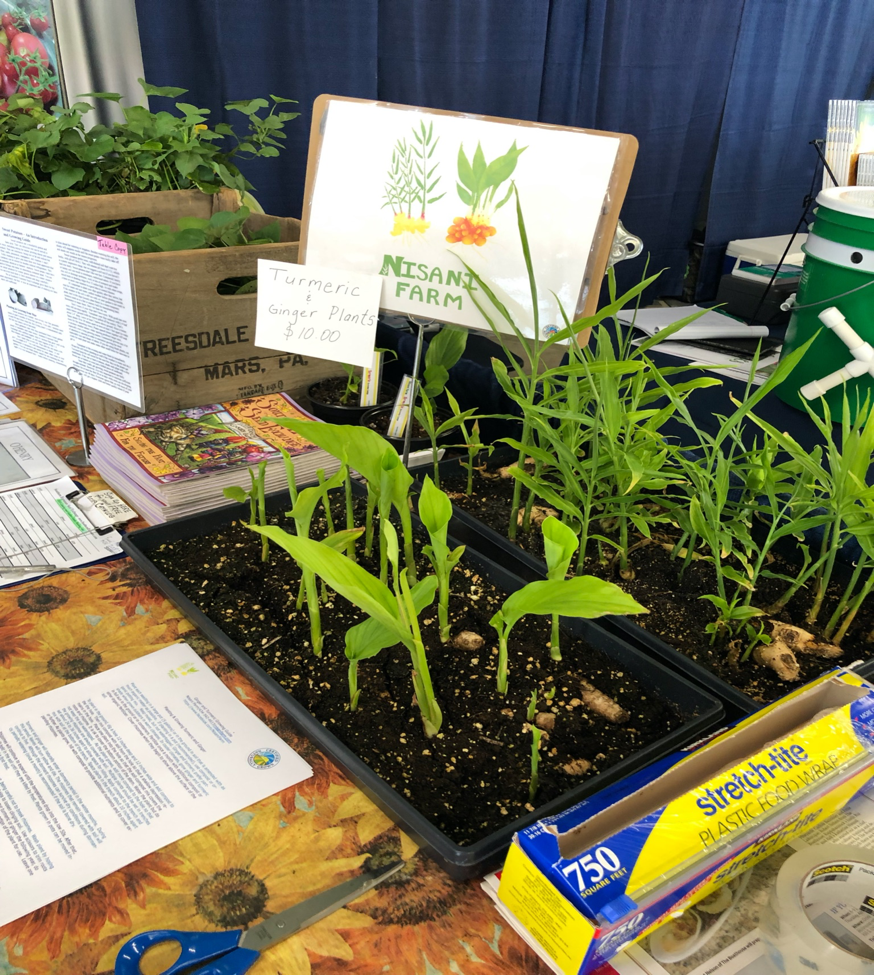
We recently added blue turmeric to our collection. It is a medicinal rhizome with camphor overtones and known for its anti-fungal and anti-inflammatory properties. It is mainly used in parts of South and Southeast Asia. We’ve brewed it in teas, dried and powdered it, and put in our bath and body products.

Planting Turmeric and Ginger for the Best Possible Crop
Once the last frost has passed, it’s time to plant your seedlings. While it is possible to grow turmeric and ginger directly in the ground, here at Nisani Farm we prefer to grow our plants in large pots. We find that we can manage soil disease better this way by removing any plants that show signs of disease before it spreads. Also, using pots makes it easy to move the plants indoors when the weather turns cold.
To plant your seedlings, place each one in a large pot (5 gallons or more) containing organic potting mix or compost mixed with wood chips. Cover the roots and rhizome with planting medium and press the soil down to remove air pockets near the roots. Keep moist, but not waterlogged. Although turmeric and ginger are tropical plants, they grow well in part-shade. In cooler climates, you can grow ginger and turmeric in full sun. Fertilize once a month with additional compost or other organic fertilizer. Cover rhizomes when they begin to show above the surface of the soil.
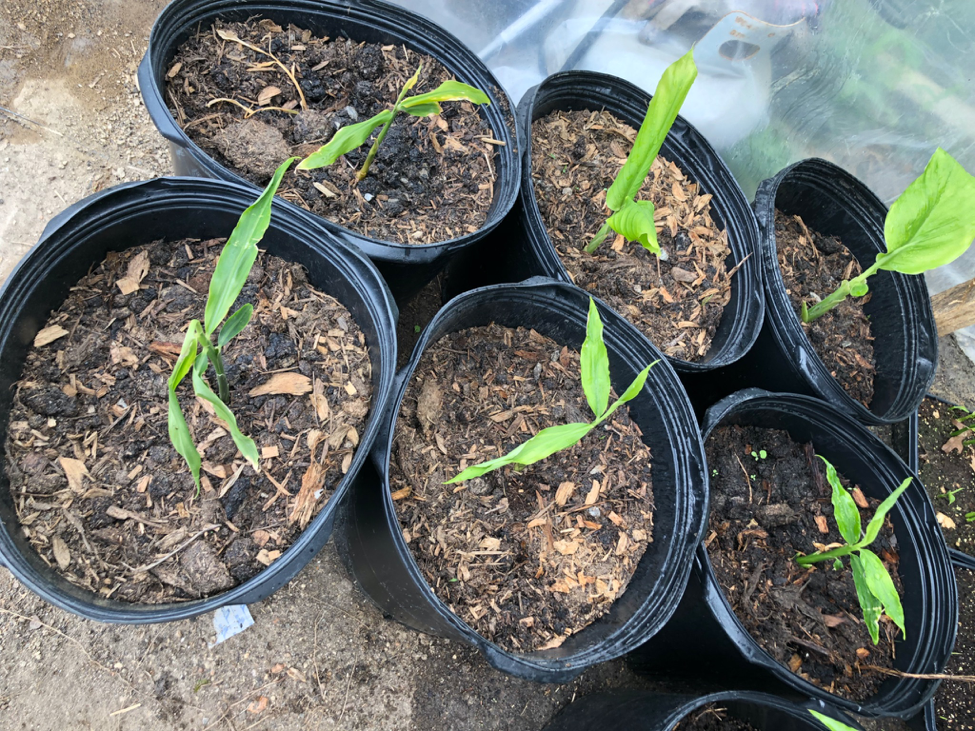
To plant in the ground, dig a hole 12 inches deep and 12 inches wide, add compost to the hole and mix with soil. Place a plant into the hole so that the soil-compost mix covers the roots and rhizome and press the soil down to remove air pockets near the roots. Water the plant but do not keep the soil waterlogged. You can plant multiple plants in trenches set 24 to 36 inches apart to allow space for hilling. Add compost to the trench, mix with soil and space plants 12 to 18 inches apart. As plants grow, hill with compost to provide additional nutrients and to cover expanding rhizomes.
Your plants should put on significant growth by September. Don’t be surprised if they grow as tall as five feet or more!
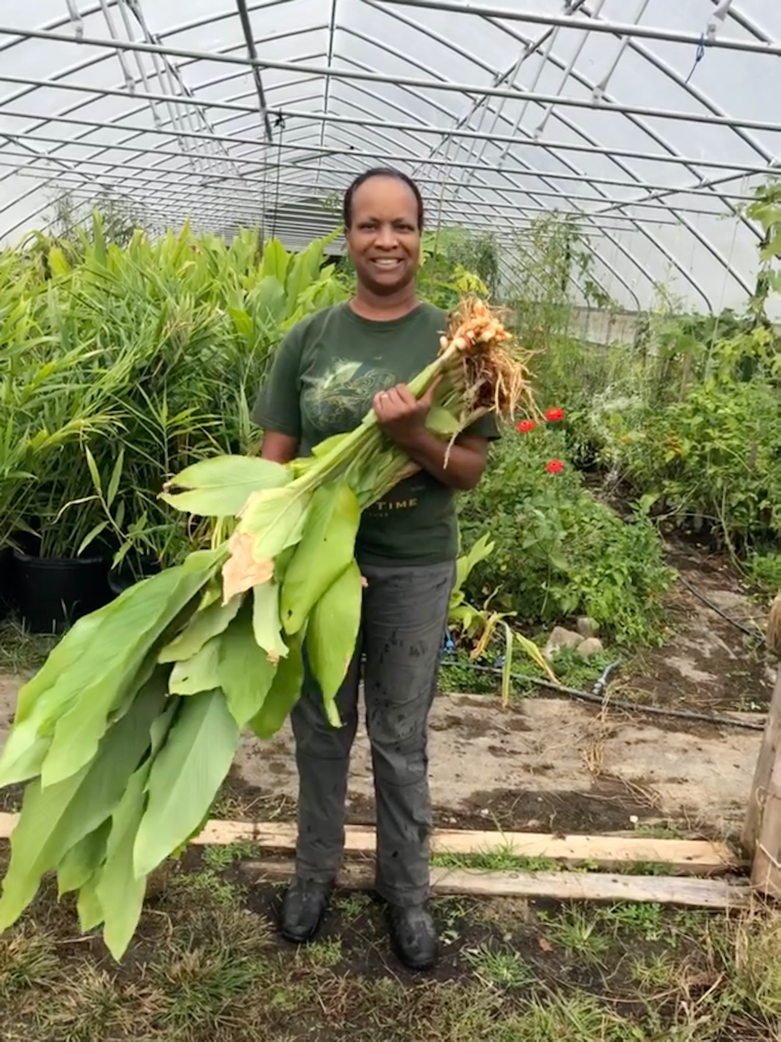
The shorter days of fall signal the formation of rhizomes. Start checking your turmeric and ginger to see if there are harvestable rhizomes in October. You can expose the soil around the stem to see if your crop is ready. If you have several plants, you can harvest plants over the course of fall to enjoy an extended crop. The longer you wait to harvest, the larger your harvest will be. Just be sure to harvest your crop before the weather drops below freezing.
Harvest by digging up the plant, cutting roots off and rinsing under a water hose. You can store your ginger in the refrigerator, or you can freeze it for use all winter. If you don’t harvest your crop, it will naturally enter a dormancy period in the winter months. During this period, leaves will turn yellow and die. Many people store their potted plants indoors for the winter. The rhizomes that remain covered with soil and protected from freezing will resprout in the spring. Although the dormant rhizomes can survive dry conditions during dormancy, periodic watering (once a month) is recommended if the soil is bone dry.
The last frost is just a few weeks away, and before you know it, you’ll be wanting to plant your ginger and/or turmeric patch. If you haven’t already started sprouting your ginger, we have the pre-sprouted plants you need to get growing!
